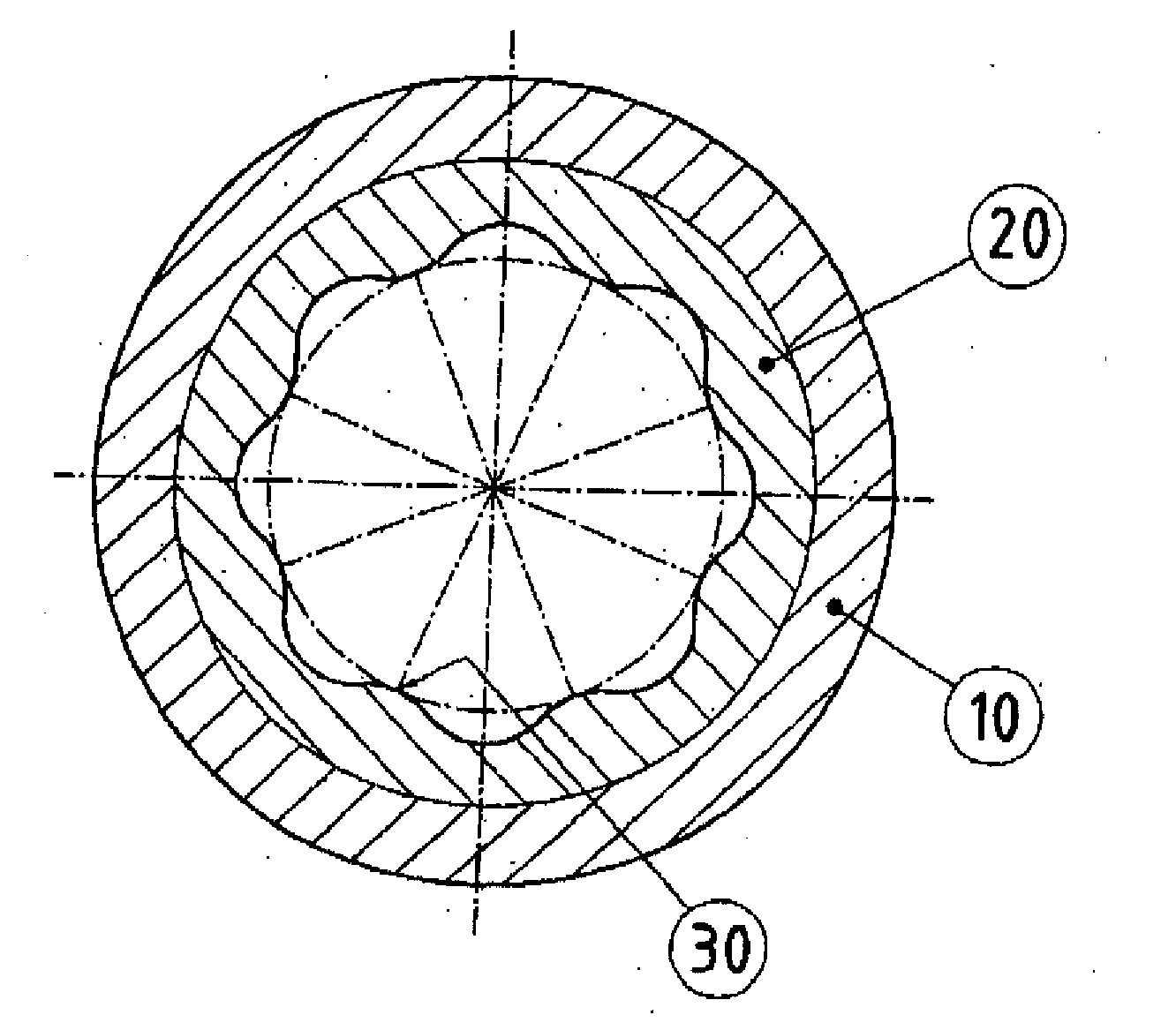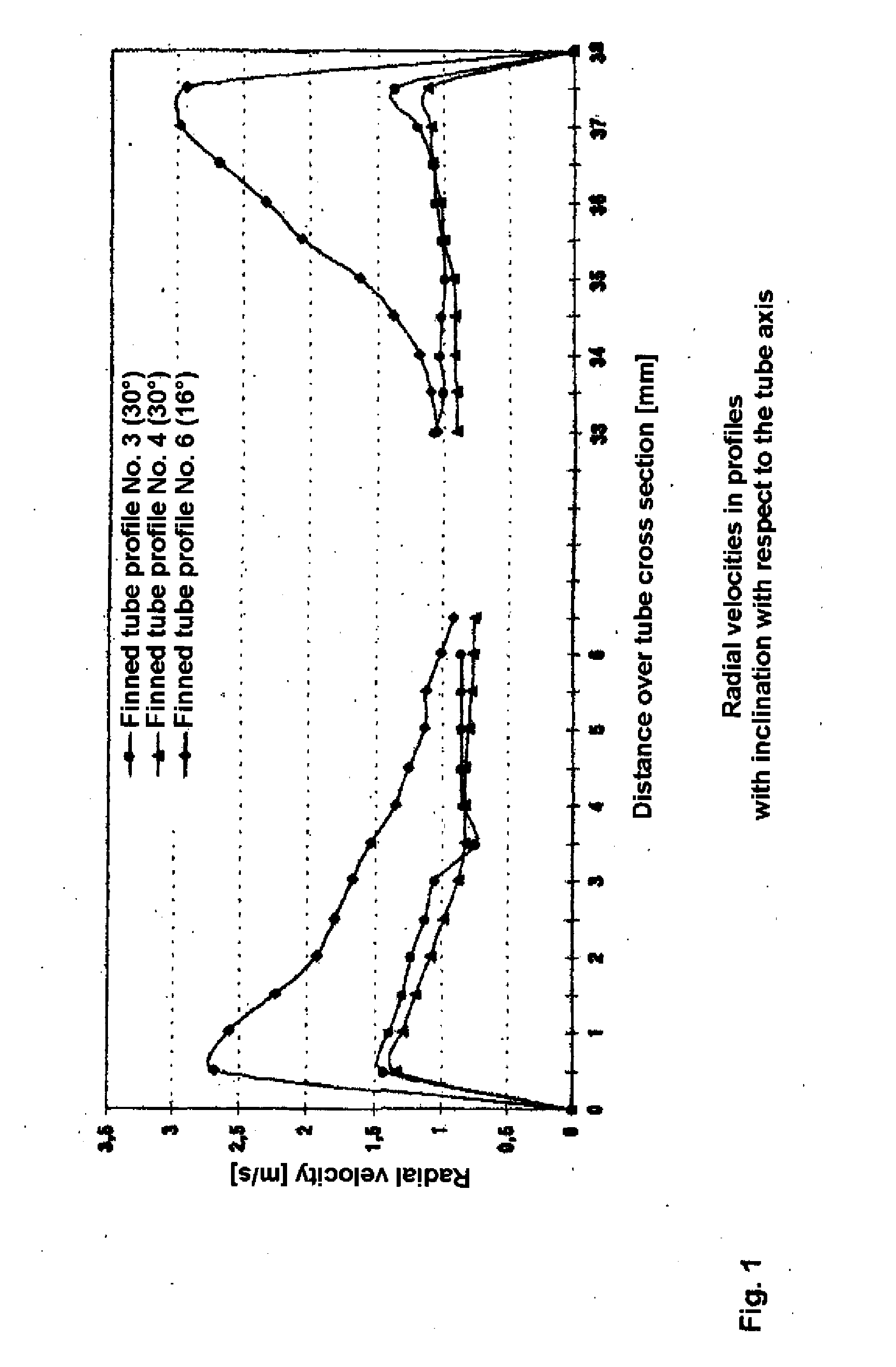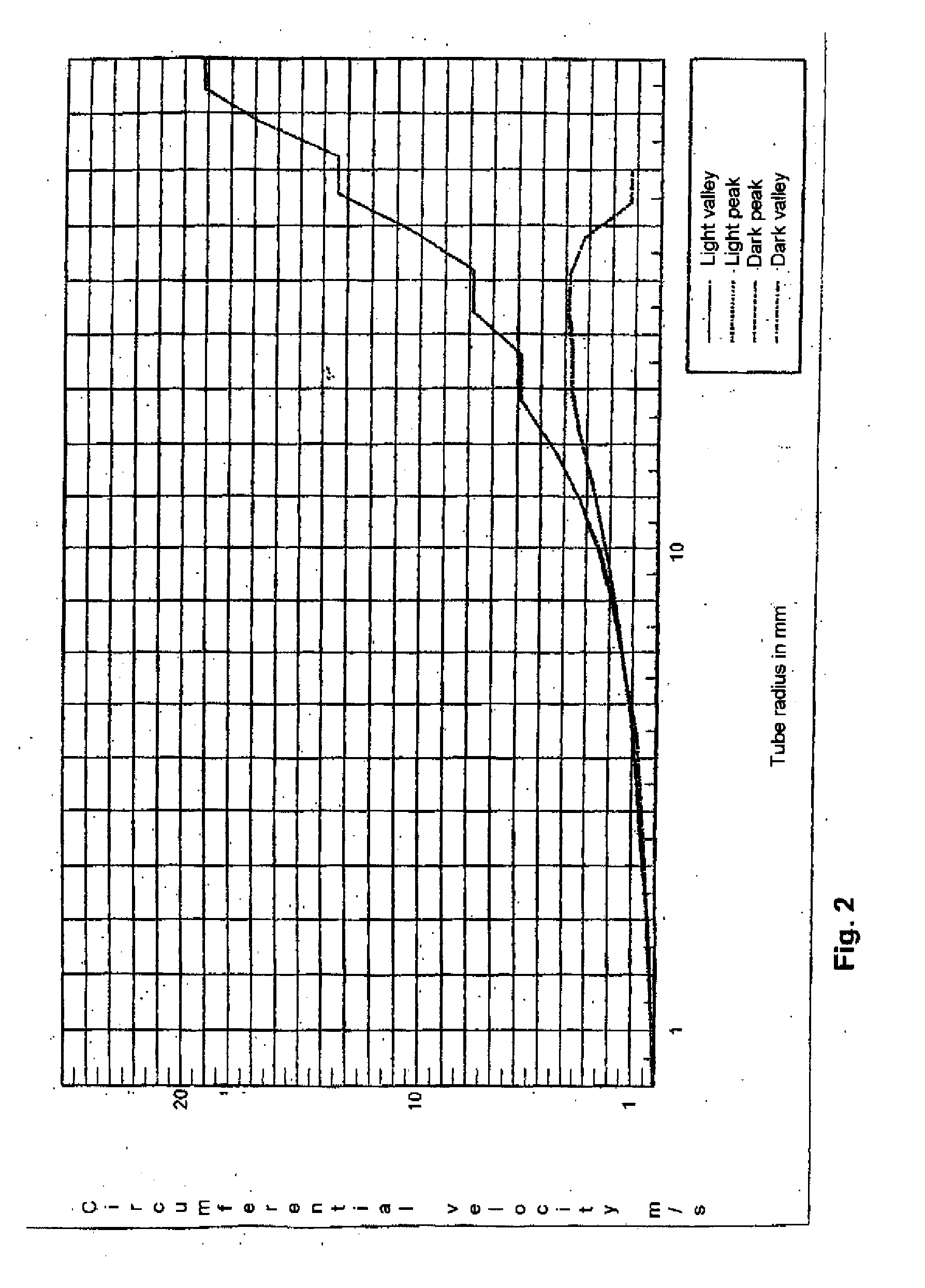Composite tube, method of producing for a composite tube, and use of a composite tube
a technology of composite tubes and composite tubes, applied in the field of composite tubes, can solve the problems of considerable adverse effect on the economics of the process, risk of crack formation, and embrittlement of tubes, and achieve the effects of reducing thermal stress on tube materials, reducing local overheating risk, and prolonging service li
- Summary
- Abstract
- Description
- Claims
- Application Information
AI Technical Summary
Benefits of technology
Problems solved by technology
Method used
Image
Examples
Embodiment Construction
[0065] The diagram presented in FIG. 1 includes a comparison of the swirling or peripheral velocities in a finned tube according to the invention (profile 3) with 8 fins and a fin pitch of 30° and two comparison tubes (profiles 4 and 6), each with a fin pitch of 16° and 3 or 8 fins, respectively, over the tube cross section. The curves clearly demonstrate the significantly higher circumferential velocity in the edge zone of the composite tube according to the invention of at most approximately 2.75 or 3 m / s compared to the maximum velocity of only approximately 1.5 m / s in the edge zones of the two comparison tubes.
[0066] The diagram presented in FIG. 2 shows the distribution of the circumferential velocity over the tube radius for the profile 3 of a composite tube according to the invention. The two—coinciding—upper curves were each measured on a radius which ran through a fin valley on the light side and on the dark side, respectively, while the two lower curves were each measured...
PUM
| Property | Measurement | Unit |
|---|---|---|
| flank angle | aaaaa | aaaaa |
| pitch angle | aaaaa | aaaaa |
| pressure | aaaaa | aaaaa |
Abstract
Description
Claims
Application Information
 Login to View More
Login to View More - R&D
- Intellectual Property
- Life Sciences
- Materials
- Tech Scout
- Unparalleled Data Quality
- Higher Quality Content
- 60% Fewer Hallucinations
Browse by: Latest US Patents, China's latest patents, Technical Efficacy Thesaurus, Application Domain, Technology Topic, Popular Technical Reports.
© 2025 PatSnap. All rights reserved.Legal|Privacy policy|Modern Slavery Act Transparency Statement|Sitemap|About US| Contact US: help@patsnap.com



